Now we're going to do some predict the product practice problems involving all the different reactions that organometallics can undergo. Keep in mind that some of these reactions will be multiple step reactions. So what that means is that you may have to draw back from previous lessons in order to really figure out the entire thing. At the end, just like always, I'll explain the answers to every problem. Let's go ahead and begin with problem 1.
- 1. A Review of General Chemistry5h 5m
- Summary23m
- Intro to Organic Chemistry5m
- Atomic Structure16m
- Wave Function9m
- Molecular Orbitals17m
- Sigma and Pi Bonds9m
- Octet Rule12m
- Bonding Preferences12m
- Formal Charges6m
- Skeletal Structure14m
- Lewis Structure20m
- Condensed Structural Formula15m
- Degrees of Unsaturation15m
- Constitutional Isomers14m
- Resonance Structures46m
- Hybridization23m
- Molecular Geometry16m
- Electronegativity22m
- 2. Molecular Representations1h 14m
- 3. Acids and Bases2h 46m
- 4. Alkanes and Cycloalkanes4h 19m
- IUPAC Naming29m
- Alkyl Groups13m
- Naming Cycloalkanes10m
- Naming Bicyclic Compounds10m
- Naming Alkyl Halides7m
- Naming Alkenes3m
- Naming Alcohols8m
- Naming Amines15m
- Cis vs Trans21m
- Conformational Isomers13m
- Newman Projections14m
- Drawing Newman Projections16m
- Barrier To Rotation7m
- Ring Strain8m
- Axial vs Equatorial7m
- Cis vs Trans Conformations4m
- Equatorial Preference14m
- Chair Flip9m
- Calculating Energy Difference Between Chair Conformations17m
- A-Values17m
- Decalin7m
- 5. Chirality3h 39m
- Constitutional Isomers vs. Stereoisomers9m
- Chirality12m
- Test 1:Plane of Symmetry7m
- Test 2:Stereocenter Test17m
- R and S Configuration43m
- Enantiomers vs. Diastereomers13m
- Atropisomers9m
- Meso Compound12m
- Test 3:Disubstituted Cycloalkanes13m
- What is the Relationship Between Isomers?16m
- Fischer Projection10m
- R and S of Fischer Projections7m
- Optical Activity5m
- Enantiomeric Excess20m
- Calculations with Enantiomeric Percentages11m
- Non-Carbon Chiral Centers8m
- 6. Thermodynamics and Kinetics1h 22m
- 7. Substitution Reactions1h 48m
- 8. Elimination Reactions2h 30m
- 9. Alkenes and Alkynes2h 9m
- 10. Addition Reactions3h 18m
- Addition Reaction6m
- Markovnikov5m
- Hydrohalogenation6m
- Acid-Catalyzed Hydration17m
- Oxymercuration15m
- Hydroboration26m
- Hydrogenation6m
- Halogenation6m
- Halohydrin12m
- Carbene12m
- Epoxidation8m
- Epoxide Reactions9m
- Dihydroxylation8m
- Ozonolysis7m
- Ozonolysis Full Mechanism24m
- Oxidative Cleavage3m
- Alkyne Oxidative Cleavage6m
- Alkyne Hydrohalogenation3m
- Alkyne Halogenation2m
- Alkyne Hydration6m
- Alkyne Hydroboration2m
- 11. Radical Reactions1h 58m
- 12. Alcohols, Ethers, Epoxides and Thiols2h 42m
- Alcohol Nomenclature4m
- Naming Ethers6m
- Naming Epoxides18m
- Naming Thiols11m
- Alcohol Synthesis7m
- Leaving Group Conversions - Using HX11m
- Leaving Group Conversions - SOCl2 and PBr313m
- Leaving Group Conversions - Sulfonyl Chlorides7m
- Leaving Group Conversions Summary4m
- Williamson Ether Synthesis3m
- Making Ethers - Alkoxymercuration4m
- Making Ethers - Alcohol Condensation4m
- Making Ethers - Acid-Catalyzed Alkoxylation4m
- Making Ethers - Cumulative Practice10m
- Ether Cleavage8m
- Alcohol Protecting Groups3m
- t-Butyl Ether Protecting Groups5m
- Silyl Ether Protecting Groups10m
- Sharpless Epoxidation9m
- Thiol Reactions6m
- Sulfide Oxidation4m
- 13. Alcohols and Carbonyl Compounds2h 17m
- 14. Synthetic Techniques1h 26m
- 15. Analytical Techniques:IR, NMR, Mass Spect7h 3m
- Purpose of Analytical Techniques5m
- Infrared Spectroscopy16m
- Infrared Spectroscopy Table31m
- IR Spect:Drawing Spectra40m
- IR Spect:Extra Practice26m
- NMR Spectroscopy10m
- 1H NMR:Number of Signals26m
- 1H NMR:Q-Test26m
- 1H NMR:E/Z Diastereoisomerism8m
- H NMR Table24m
- 1H NMR:Spin-Splitting (N + 1) Rule22m
- 1H NMR:Spin-Splitting Simple Tree Diagrams11m
- 1H NMR:Spin-Splitting Complex Tree Diagrams12m
- 1H NMR:Spin-Splitting Patterns8m
- NMR Integration18m
- NMR Practice14m
- Carbon NMR4m
- Structure Determination without Mass Spect47m
- Mass Spectrometry12m
- Mass Spect:Fragmentation28m
- Mass Spect:Isotopes27m
- 16. Conjugated Systems6h 13m
- Conjugation Chemistry13m
- Stability of Conjugated Intermediates4m
- Allylic Halogenation12m
- Reactions at the Allylic Position39m
- Conjugated Hydrohalogenation (1,2 vs 1,4 addition)26m
- Diels-Alder Reaction9m
- Diels-Alder Forming Bridged Products11m
- Diels-Alder Retrosynthesis8m
- Molecular Orbital Theory9m
- Drawing Atomic Orbitals6m
- Drawing Molecular Orbitals17m
- HOMO LUMO4m
- Orbital Diagram:3-atoms- Allylic Ions13m
- Orbital Diagram:4-atoms- 1,3-butadiene11m
- Orbital Diagram:5-atoms- Allylic Ions10m
- Orbital Diagram:6-atoms- 1,3,5-hexatriene13m
- Orbital Diagram:Excited States4m
- Pericyclic Reaction10m
- Thermal Cycloaddition Reactions26m
- Photochemical Cycloaddition Reactions26m
- Thermal Electrocyclic Reactions14m
- Photochemical Electrocyclic Reactions10m
- Cumulative Electrocyclic Problems25m
- Sigmatropic Rearrangement17m
- Cope Rearrangement9m
- Claisen Rearrangement15m
- 17. Ultraviolet Spectroscopy51m
- 18. Aromaticity2h 34m
- 19. Reactions of Aromatics: EAS and Beyond5h 1m
- Electrophilic Aromatic Substitution9m
- Benzene Reactions11m
- EAS:Halogenation Mechanism6m
- EAS:Nitration Mechanism9m
- EAS:Friedel-Crafts Alkylation Mechanism6m
- EAS:Friedel-Crafts Acylation Mechanism5m
- EAS:Any Carbocation Mechanism7m
- Electron Withdrawing Groups22m
- EAS:Ortho vs. Para Positions4m
- Acylation of Aniline9m
- Limitations of Friedel-Crafts Alkyation19m
- Advantages of Friedel-Crafts Acylation6m
- Blocking Groups - Sulfonic Acid12m
- EAS:Synergistic and Competitive Groups13m
- Side-Chain Halogenation6m
- Side-Chain Oxidation4m
- Reactions at Benzylic Positions31m
- Birch Reduction10m
- EAS:Sequence Groups4m
- EAS:Retrosynthesis29m
- Diazo Replacement Reactions6m
- Diazo Sequence Groups5m
- Diazo Retrosynthesis13m
- Nucleophilic Aromatic Substitution28m
- Benzyne16m
- 20. Phenols55m
- 21. Aldehydes and Ketones: Nucleophilic Addition4h 56m
- Naming Aldehydes8m
- Naming Ketones7m
- Oxidizing and Reducing Agents9m
- Oxidation of Alcohols28m
- Ozonolysis7m
- DIBAL5m
- Alkyne Hydration9m
- Nucleophilic Addition8m
- Cyanohydrin11m
- Organometallics on Ketones19m
- Overview of Nucleophilic Addition of Solvents13m
- Hydrates6m
- Hemiacetal9m
- Acetal12m
- Acetal Protecting Group16m
- Thioacetal6m
- Imine vs Enamine15m
- Addition of Amine Derivatives5m
- Wolff Kishner Reduction7m
- Baeyer-Villiger Oxidation39m
- Acid Chloride to Ketone7m
- Nitrile to Ketone9m
- Wittig Reaction18m
- Ketone and Aldehyde Synthesis Reactions14m
- 22. Carboxylic Acid Derivatives: NAS2h 51m
- Carboxylic Acid Derivatives7m
- Naming Carboxylic Acids9m
- Diacid Nomenclature6m
- Naming Esters5m
- Naming Nitriles3m
- Acid Chloride Nomenclature5m
- Naming Anhydrides7m
- Naming Amides5m
- Nucleophilic Acyl Substitution18m
- Carboxylic Acid to Acid Chloride6m
- Fischer Esterification5m
- Acid-Catalyzed Ester Hydrolysis4m
- Saponification3m
- Transesterification5m
- Lactones, Lactams and Cyclization Reactions10m
- Carboxylation5m
- Decarboxylation Mechanism14m
- Review of Nitriles46m
- 23. The Chemistry of Thioesters, Phophate Ester and Phosphate Anhydrides1h 10m
- 24. Enolate Chemistry: Reactions at the Alpha-Carbon1h 53m
- Tautomerization9m
- Tautomers of Dicarbonyl Compounds6m
- Enolate4m
- Acid-Catalyzed Alpha-Halogentation4m
- Base-Catalyzed Alpha-Halogentation3m
- Haloform Reaction8m
- Hell-Volhard-Zelinski Reaction3m
- Overview of Alpha-Alkylations and Acylations5m
- Enolate Alkylation and Acylation12m
- Enamine Alkylation and Acylation16m
- Beta-Dicarbonyl Synthesis Pathway7m
- Acetoacetic Ester Synthesis13m
- Malonic Ester Synthesis15m
- 25. Condensation Chemistry2h 9m
- 26. Amines1h 43m
- 27. Heterocycles2h 0m
- Nomenclature of Heterocycles15m
- Acid-Base Properties of Nitrogen Heterocycles10m
- Reactions of Pyrrole, Furan, and Thiophene13m
- Directing Effects in Substituted Pyrroles, Furans, and Thiophenes16m
- Addition Reactions of Furan8m
- EAS Reactions of Pyridine17m
- SNAr Reactions of Pyridine18m
- Side-Chain Reactions of Substituted Pyridines20m
- 28. Carbohydrates5h 53m
- Monosaccharide20m
- Monosaccharides - D and L Isomerism9m
- Monosaccharides - Drawing Fischer Projections18m
- Monosaccharides - Common Structures6m
- Monosaccharides - Forming Cyclic Hemiacetals12m
- Monosaccharides - Cyclization18m
- Monosaccharides - Haworth Projections13m
- Mutarotation11m
- Epimerization9m
- Monosaccharides - Aldose-Ketose Rearrangement8m
- Monosaccharides - Alkylation10m
- Monosaccharides - Acylation7m
- Glycoside6m
- Monosaccharides - N-Glycosides18m
- Monosaccharides - Reduction (Alditols)12m
- Monosaccharides - Weak Oxidation (Aldonic Acid)7m
- Reducing Sugars23m
- Monosaccharides - Strong Oxidation (Aldaric Acid)11m
- Monosaccharides - Oxidative Cleavage27m
- Monosaccharides - Osazones10m
- Monosaccharides - Kiliani-Fischer23m
- Monosaccharides - Wohl Degradation12m
- Monosaccharides - Ruff Degradation12m
- Disaccharide30m
- Polysaccharide11m
- 29. Amino Acids3h 20m
- Proteins and Amino Acids19m
- L and D Amino Acids14m
- Polar Amino Acids14m
- Amino Acid Chart18m
- Acid-Base Properties of Amino Acids33m
- Isoelectric Point14m
- Amino Acid Synthesis: HVZ Method12m
- Synthesis of Amino Acids: Acetamidomalonic Ester Synthesis16m
- Synthesis of Amino Acids: N-Phthalimidomalonic Ester Synthesis13m
- Synthesis of Amino Acids: Strecker Synthesis13m
- Reactions of Amino Acids: Esterification7m
- Reactions of Amino Acids: Acylation3m
- Reactions of Amino Acids: Hydrogenolysis6m
- Reactions of Amino Acids: Ninhydrin Test11m
- 30. Peptides and Proteins2h 42m
- Peptides12m
- Primary Protein Structure4m
- Secondary Protein Structure17m
- Tertiary Protein Structure11m
- Disulfide Bonds17m
- Quaternary Protein Structure10m
- Summary of Protein Structure7m
- Intro to Peptide Sequencing2m
- Peptide Sequencing: Partial Hydrolysis25m
- Peptide Sequencing: Partial Hydrolysis with Cyanogen Bromide7m
- Peptide Sequencing: Edman Degradation28m
- Merrifield Solid-Phase Peptide Synthesis18m
- 31. Catalysis in Organic Reactions1h 30m
- 32. Lipids 2h 50m
- 33. The Organic Chemistry of Metabolic Pathways2h 52m
- Intro to Metabolism6m
- ATP and Energy6m
- Intro to Coenzymes3m
- Coenzymes in Metabolism16m
- Energy Production in Biochemical Pathways5m
- Intro to Glycolysis3m
- Catabolism of Carbohydrates: Glycolysis27m
- Glycolysis Summary15m
- Pyruvate Oxidation (Simplified)4m
- Anaerobic Respiration11m
- Catabolism of Fats: Glycerol Metabolism11m
- Intro to Citric Acid Cycle7m
- Structures of the Citric Acid Cycle19m
- The Citric Acid Cycle35m
- 34. Nucleic Acids1h 32m
- 35. Transition Metals6h 14m
- Electron Configuration of Elements45m
- Coordination Complexes20m
- Ligands24m
- Electron Counting10m
- The 18 and 16 Electron Rule13m
- Cross-Coupling General Reactions40m
- Heck Reaction40m
- Stille Reaction13m
- Suzuki Reaction25m
- Sonogashira Coupling Reaction17m
- Fukuyama Coupling Reaction15m
- Kumada Coupling Reaction13m
- Negishi Coupling Reaction16m
- Buchwald-Hartwig Amination Reaction19m
- Eglinton Reaction17m
- Catalytic Allylic Alkylation18m
- Alkene Metathesis23m
- 36. Synthetic Polymers1h 49m
- Introduction to Polymers6m
- Chain-Growth Polymers10m
- Radical Polymerization15m
- Cationic Polymerization8m
- Anionic Polymerization8m
- Polymer Stereochemistry3m
- Ziegler-Natta Polymerization4m
- Copolymers6m
- Step-Growth Polymers11m
- Step-Growth Polymers: Urethane6m
- Step-Growth Polymers: Polyurethane Mechanism10m
- Step-Growth Polymers: Epoxy Resin8m
- Polymers Structure and Properties8m
Organometallic Cumulative Practice: Study with Video Lessons, Practice Problems & Examples
 Created using AI
Created using AIIn organometallic chemistry, understanding both product prediction and retrosynthesis is crucial. Predicting products involves recognizing various reactions, including 1,2-addition and nucleophilic acyl substitution, which may require multiple steps. Retrosynthesis focuses on identifying necessary reagents to synthesize a target compound, utilizing knowledge of organometallic reactions. Mastery of these concepts enhances problem-solving skills and deepens comprehension of reaction mechanisms, such as electrophilic additions and the role of Grignard reagents in organic synthesis.
Intro to Predict the Product
Video transcript
Predict the product of the reaction





Predict the product of the reaction


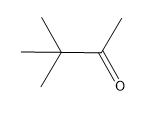


Predict the product of the reaction



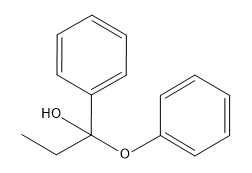
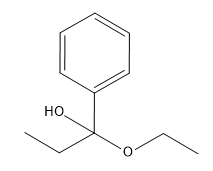
Predict the product of the reaction


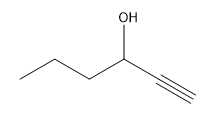
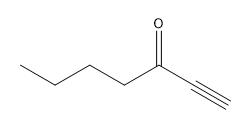

Intro to Retrosynthesis
Video transcript
Now let's focus on some practice problems involving organometallics, but going the other way around, we want to do some retrosynthesis now. What that means is that you're going to try to figure out what reagents it's going to take to make the final product. Think about all of the different reactions of organometallics we talked about and see how you can use them to your advantage in the next few questions. So let's go ahead and try to do the first one.
Propose a synthesis to accomplish the following transformation





Propose a synthesis to accomplish the following transformation



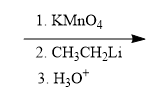

Predict the product of the reaction

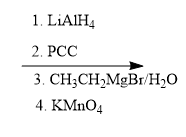



Do you want more practice?
More setsHere’s what students ask on this topic:
What are the common reactions involving Grignard reagents in organometallic chemistry?
Grignard reagents (RMgX) are highly versatile in organometallic chemistry. Common reactions include:
- 1,2-Addition: Grignard reagents add to carbonyl compounds (aldehydes, ketones) to form alcohols.
- Nucleophilic Acyl Substitution: They react with esters to form tertiary alcohols.
- Carboxylation: Reaction with CO2 to form carboxylic acids.
- Formation of C-C Bonds: React with alkyl halides to form new carbon-carbon bonds.
These reactions are fundamental in organic synthesis, enabling the construction of complex molecules.
 Created using AI
Created using AIHow do you predict the product of a reaction involving organometallic compounds?
Predicting the product of a reaction involving organometallic compounds requires understanding the reactivity of the organometallic reagent and the functional groups present in the substrate. Key steps include:
- Identify the nucleophilic center in the organometallic reagent.
- Determine the electrophilic center in the substrate.
- Consider possible reaction pathways, such as 1,2-addition or nucleophilic acyl substitution.
- Account for any subsequent steps, such as protonation or rearrangement.
By following these steps, you can systematically predict the reaction product.
 Created using AI
Created using AIWhat is retrosynthesis and how is it applied in organometallic chemistry?
Retrosynthesis is a strategy used to plan the synthesis of complex molecules by breaking them down into simpler precursor structures. In organometallic chemistry, it involves:
- Identifying the target molecule.
- Determining the key bonds that need to be formed.
- Working backward to identify suitable organometallic reagents and reactions that can form these bonds.
- Considering alternative pathways and selecting the most efficient route.
This approach helps in designing a synthetic route by utilizing the unique reactivity of organometallic compounds.
 Created using AI
Created using AIWhat are the key differences between 1,2-addition and nucleophilic acyl substitution in organometallic reactions?
1,2-Addition and nucleophilic acyl substitution are two distinct reaction mechanisms:
- 1,2-Addition: Involves the addition of a nucleophile (e.g., Grignard reagent) to the carbonyl carbon of aldehydes or ketones, resulting in the formation of alcohols.
- Nucleophilic Acyl Substitution: Involves the substitution of a leaving group (e.g., halide) in acyl compounds (e.g., esters) by a nucleophile, leading to the formation of new carbonyl-containing compounds.
The key difference lies in the type of substrate and the nature of the product formed.
 Created using AI
Created using AIHow do Grignard reagents react with carbon dioxide?
Grignard reagents react with carbon dioxide in a carboxylation reaction to form carboxylic acids. The reaction proceeds as follows:
- The Grignard reagent (RMgX) attacks the electrophilic carbon in CO2, forming a carboxylate intermediate.
- The intermediate is then protonated during an acidic workup to yield the carboxylic acid (RCOOH).
This reaction is useful for converting alkyl halides into carboxylic acids.
 Created using AI
Created using AIYour Organic Chemistry tutors
- Predict the product of the diorganocuprate cross-coupling reactions shown.(c) <IMAGE>
- Suggest a synthesis of the following molecule starting with the reagents shown, using cuprate cross-coupling a...
- (•••) Suggest a synthetic scheme, involving a protecting group, to generate the molecule shown starting with t...
- (•••) Suggest a synthetic scheme, involving a protecting group, to generate the molecule shown starting with t...
- Predict the product of the following reactions.(b) <IMAGE>
- Suggest a series of steps involving a cuprate reagent that would convert the reactant on the left to the produ...
- Suggest a reagent and a reactant that could be used to form the following molecules by conjugate addition of a...
- To this point, we have seen four reactions that can be done by Gilman reagents. What are they? What do they ha...
- (••) Phenol oxidation can be coupled with other reactions to form new C―C bonds using reactions studied previo...
- What are the products of the following reactions?b. <IMAGE>
- What are the products of the following reactions? Show all stereoisomers that are formed.a. <IMAGE>b. &l...
- What product is formed when 3-methyl-2-cyclohexenone reacts with each of the following reagents?a. CH3MgBr fol...
- The Reformatsky reaction is an addition reaction in which an organozinc reagent is used instead of a Grignard ...
- Using bromocyclohexane as a starting material, how could you synthesize the following compounds?a. <IMAGE&g...
- What alcohols are formed from the reaction of ethylene oxide with the following organocuprates followed by the...
- Show how you would synthesize the following compound from alkyl halides, vinyl halides, and aryl halides conta...
- Show how you would accomplish the following syntheticconversions by adding an organolithium reagent to an acid...
- Predict the products of the following reactions: (c) <IMAGE of reaction> (d) <IMAGE of reaction>
- Show how you would accomplish the following syntheticconversions by adding an organolithium reagent to an acid...
- Propose structures for intermediates and products (A) through (K)<IMAGE>
- Devise a synthesis for each compound, starting with methylenecyclohexane and any other reagents you need.(f) 1...
- Show how you would accomplish the following synthetic conversions by adding an organolithium reagent to an aci...
- Show how you would accomplish the following synthetic conversions by adding an organolithium reagent to an aci...
- Draw the organic products you would expect to isolate from the following reactions (after hydrolysis).(p) <...
- Predict the major products of the following reactions.(g) <IMAGE of reaction>
- Draw the organic products you would expect to isolate from the following reactions (after hydrolysis).(a) <...
- Predict the products of the following reactions.(d) <IMAGE>(e) <IMAGE>
- Suggest the most appropriate method for each of the following laboratory syntheses. In each case, suggest both...
- Develop syntheses for the following compounds. As starting materials, you may use cyclopentanol, alcohols cont...
- Show how you would synthesize the following compounds from any starting materials containing no more than six ...
- Develop syntheses for the following compounds. As starting materials, you may use cyclopentanol, alcohols cont...
- Develop syntheses for the following compounds. As starting materials, you may use cyclopentanol, alcohols cont...
- What products are obtained from metathesis of each of the following alkenes? b.
- What is the product of each of the following reactions? b.
- What product is obtained from ring-opening metathesis polymerization of each of the following compounds? (Hint...
- What compound undergoes metathesis to form each of the following compounds? a.
- What products are obtained from metathesis of each of the following alkenes? a. CH3CH2CH=CH2
- What new products are obtained from metathesis of the following alkyne?
- Draw the product of ring-closing metathesis for each of the following compounds: a.
- What starting material is required in order to synthesize each of the following compounds by ring-closing meta...
- Muscalure is the sex attractant of the common housefly. Flies are lured to traps filled with bait that contain...
- Using the epoxide shown, addition of an organolithium reagent, when followed by an acid quench, produces only ...
- Predict the product of the following epoxide addition reactions. (a)
- A variety of organometallics, which as strong nucleophiles can react with epoxides, are introduced in Chapter ...
- Give the structures of intermediates A through H in the following synthesis of trans-1-cyclohexyl-2-methoxycyc...
- Predict the major products of the following reactions, and give the structures of any intermediates. Include s...
- For each of the following carbonyl addition reactions, would you expect a racemic mixture or a mixture enriche...
- Predict the product of the following aldehyde and ketone addition reactions.(a) <IMAGE>
- Predict the product of the following aldehyde and ketone addition reactions.(c) <IMAGE>
- b. What other product is formed in this reaction?
- Using the given starting material, any necessary inorganic reagents and catalysts, and any carbon-containing c...
- What organometallic compound is formed from the reaction of excess methylmagnesium chloride and GaCl3? (Hint:...
- What bromo-substituted compound would be required to react with (CH2=CH)2CuLi in order to formeach of the foll...
- What alkyl halide reacts with lithium divinylcuprate 3(CH2=CH)2CuLi4 for the synthesis of each of the followin...
- Predict the product that would result from the reaction of an organolithium reagent with a ketone when a hydro...
- The situation shown here is an example where a cuprate is the only organometallic that will allow the product ...
- What bromo-substituted compound would be required to react with (CH2=CH)2CuLi in order to form each of the fol...
- What alkyl halide reacts with lithium divinylcuprate 3(CH2=CH)2CuLi4 for the synthesis of each of the followin...
- What alcohols are formed from the reaction of ethylene oxide with the following organocuprates followed by the...
- What are the products of the following reactions? a.
- Identify compounds A and B:
- A dibromide loses only one bromine when it reacts with sodium hydroxide. The dibromide forms toluene (C6H5-CH3...
- What is the major product of each of the following reactions? c. d.
- Using the given starting material, any necessary inorganic reagents and catalysts, and any carbon-containing c...
- The Reformatsky reaction is an addition reaction in which an organozinc reagent is used instead of a Grignard ...
- Identify A through H
- Fill in the boxes with the appropriate reagents:
- Using the given starting material, any necessary inorganic reagents and catalysts, and any carbon-containing c...
- Using the given starting material, any necessary inorganic reagents and catalysts, and any carbon-containing c...
- Using the given starting material, any necessary inorganic reagents, and any carbon-containing compounds with ...
- Using bromocyclohexane as a starting material, how could you synthesize the following compounds? d.
- How can the following compounds be prepared from the given starting materials? c.
- Show how each of the following compounds can be prepared, using the given starting material: e.
- Identify A through O:
- a. Show the reagents required to form the primary alcohol in each of the following reactions.
- a. Show the reagents required to form the primary alcohol in each of the following reactions.
- Show how you would accomplish the following syntheses. You may use whatever additional reagents you need. (c)...
- Predict the major products of the following reactions. (d) < of reaction>
- Two of the methods for converting alkyl halides to carboxylic acids are covered in Sections 20-8B and 20-8C. O...
- Predict the products of the following reactions. (a) sec-butylmagnesium iodide + D2O (b) n-butyllithium + CH3C...
- Point out the flaws in the following incorrect Grignard syntheses. (a)
- Show how you would accomplish the following synthetic conversions. (c) < of reaction>
- Show how you would accomplish the following synthetic conversions. (d) < of reaction>
- Compound A is an optically active alcohol. Treatment with chromic acid converts A into a ketone, B. In a sepa...
- Give the structures of the intermediates and products V through Z. < of reactions>
- To practice working through the early parts of a multistep synthesis, devise syntheses of (a) pentan-3-one fr...
- To practice working through the early parts of a multistep synthesis, devise syntheses of (b) 3-ethylpentan-2...
- Develop syntheses for the following compounds. As starting materials, you may use cyclopentanol, alcohols co...
- Show how you would synthesize the following compounds from any starting materials containing no more than six ...
- Show how this 1° alcohol can be made from the following: (b) formaldehyde
- For each synthesis, start with bromocyclohexane and predict the products. Assume that an excess of each reacta...
- What organocuprate reagent would you use for the following substitutions? (a) (b)
- What products would you expect from the following reactions? (a) (b)
- Design a synthesis for each of the following, using an intramolecular reaction:f. <IMAGE>
- Show how you might synthesize the following compounds starting with bromobenzene, and alkyl or alkenyl halides...
- Show how you might synthesize the following compounds starting with bromobenzene, and alkyl or alkenyl halides...
- Show how you would add a Grignard reagent to an ester or a nitrile to synthesize (a) 4-phenylheptan-4-ol.
- Grignard reagents add to carbonate esters as they add to other esters. (a) Predict the major product of the f...
- a. Metathesis of which of the following sets of alkenes leads to the highest yield of a single alkene?1. 1-but...

